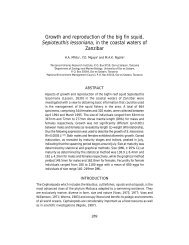gpa_east_africa_case.. - GRID Africa GeoPortal - UNEP
gpa_east_africa_case.. - GRID Africa GeoPortal - UNEP
gpa_east_africa_case.. - GRID Africa GeoPortal - UNEP
You also want an ePaper? Increase the reach of your titles
YUMPU automatically turns print PDFs into web optimized ePapers that Google loves.
Urban development in the Beau Vallon area is projected to accommodate• 222 units on the land occupied previously by a government owned farm.• 75 units on the Land Bank Project• 115 units at Mare Anglaise• 100 units at the northern limit of the study area• 512 additional units and net population increase of 1,152 population equivalent by 2010(net immigration inflow of 50%)New hotel developments are also planned in the study area. The table below providesprojections based on figures, which include expressions of interest from various private sectororganisations.Tourism Projections for greater Beau VallonNumber of rooms 1994 2002 2010Hotels 383 685 685Guesthouses 96 201 252Total 479 886 937Source: SOGREAH, 1996Sewerage PolicyAnalysis of the biological and chemical state of the marine environment of the bay in 1989-90by SETOI, concluded that the quality of the sea water is deteriorating as a result of humanactivities and if nothing was done the Beau Vallon Beach and tourist sites would sufferirreversible consequences. The Government of Seychelles, through PUC commissionedsewerage studies covering the entire greater Beau Vallon area, prior to undertake physicalimplementation of a centralised wastewater treatment plant. The French ConsultantSOGREAH carried out the studies (1994-1997) funded by the Caise Francaise deDeveloppement (CFD) and the Government. The Beau Vallon Bay Sewerage Project wasdesigned providing for the construction of a new wastewater collection and disposalinfrastructure system to serve the sewerage needs of the northern portion of the island by theyear 2010. The cost of the Study was SR 3.7 million (or $0.6).The Environmental Management Plan for Seychelles (EMPS) 1990–2000 based onsustainable development objectives, stated:“...unless adequate precautions are soon taken then the limits of environmental tolerance onand around Mahé could be exceeded with costly or irreversible consequences. The growth ofnew industries will compound the already existing problems of waste treatment and disposal.High levels of marine pollution are already building up in the main Victoria harbour area.Unless great care is exercised the impact of sewage and other wastes could seriously attackthe marine environment and aquatic resources on which the economy depends.” (EMPS,1990)The objective of development policy is, by the year 2010, to increase the percentage ofpopulation of Beau Vallon served by water-borne sewerage systems from 20% at present to70%. The remaining balance will be served by individual sanitation systems, mainly septictanks, reducing the percentage served by pit latrines to 10%. Sewerage, like other socialservices, are regarded as basic needs, although the Government’s objective is to reconcileservice delivery with service efficient, cost recovery and affordability criteria. The generalstrategy determining which area shall be served by central sewerage systems include thefollowing guidelines that qualify Greater Beau Vallon for Central Sewerage System.• all areas with population density of over 25 persons per hectare or with 1 house on plotsof 1,500 sq. metres or less;• all hotels with more then 25 rooms.Measures/Projects implementedThe EMPS 1990 – 2000 identified major areas of concern with regard to wastewatertreatment and recommended certain actions, which included a number a large scaleinvestments. Prior to 1999, no major centralised wastewater treatment work had been built inSeychelles.. However, the issue has been studied extensively; the greater Victoria SewerageFinal Draft Report – Cost Benefit Case StudiesGPA Strategic Action Plan on Sewage, October, 200097



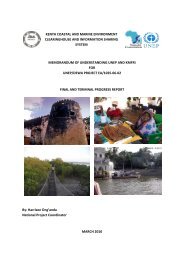
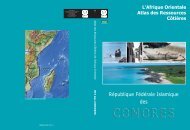
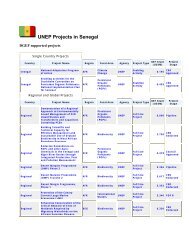

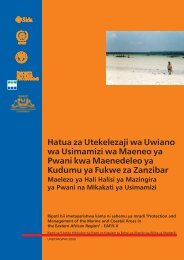
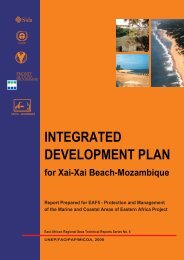
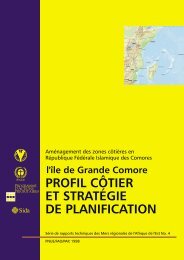
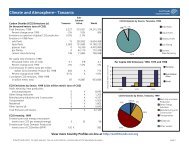

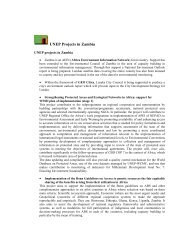
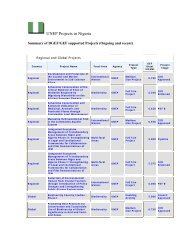
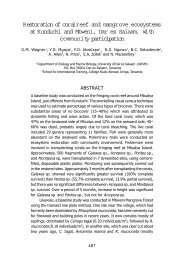
![Please Click to download [English] - GRID Africa GeoPortal - UNEP](https://img.yumpu.com/30633391/1/184x260/please-click-to-download-english-grid-africa-geoportal-unep.jpg?quality=85)
